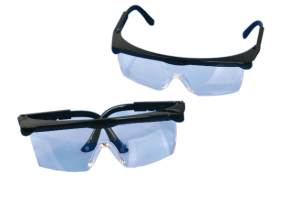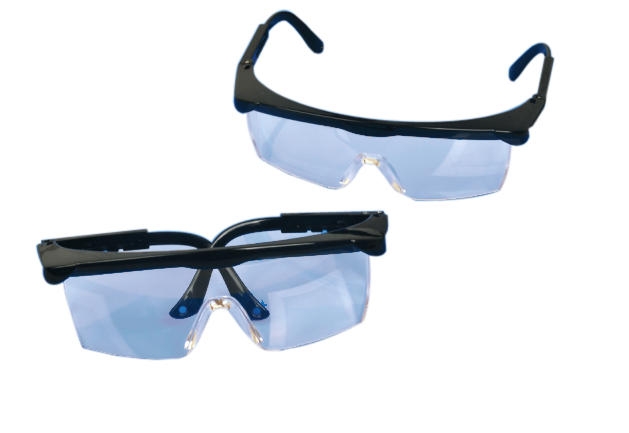PROTECTIVE SAFETY GLASSES
Protective Safety Glasses
Medical safety glasses provide a side shield that connects each lens to the frame, covering your temples and preventing a rogue splatter from entering your eye through the side. They’ll also have a top shield that protects the area between your brow bone and the top frame of your glasses.
Description
| Ref. No.: |
Description: |
| NMDE950016 |
Black |
FOR GENERAL WORKING CONDITIONS TO PROTECT AGAINST DUST, CHIPS OR FLYING OBJECTS; WITH SIDE SHIELDS AND WRAPAROUND-STYLE SIDE PROTECTION
Protective Safety Glasses should adjust to a better quality of effect obstruction than customary eyeglasses, which optical experts once in a while call "dress eyewear." This better quality applies to both the focal points and the casings of wellbeing glasses and goggles.
There are two sorts of security glasses: solution wellbeing glasses and non-remedy (likewise called "plano" wellbeing glasses.
No matter what their size or the solidness of the edge and focal points, customary remedy eyeglasses don't qualify as security glasses except if they meet explicit rules.
Protective Safety Glasses
In the United States, the national government builds up wellbeing rules for working environments, to diminish the danger of hands on wounds. The Occupational Safety and Health Administration (OSHA) inside the U.S. Division of Labor administers wellbeing rehearses in the working environment and in instructive settings.
OSHA has embraced wellbeing eyewear principles set up by the American National Standards Institute (ANSI), a private, non-benefit association that makes quality and security guidelines for a wide assortment of items.
The ANSI standard applying to eye wellbeing incorporates a few sorts of eye insurance gadgets, including eyeglasses (both remedy and non-solution), goggles, face safeguards, welding protective caps and full-face respirators.

ANSI guidelines for wellbeing eyewear
Refreshed ANSI wellbeing eyewear guidelines incorporate the accompanying key elements:
For the fundamental effect tests, focal points are tried independently (not mounted in an edge). For the high effect order, the casing and focal points are tried all together.
Infographic: 8 Tips for Healthy Eyes This Year
'Tis the Season for Eye Health - No Matter What the Season
Non-remedy focal points utilized for high effect testing are viewed as basically more vulnerable than solution focal points made of a similar material; the solution focal points are by and large thicker.
More slender remedy wellbeing focal points are currently permitted, in the event that they meet the high effect testing necessities. (Beforehand, all remedy security focal points needed to have a base thickness of 3 mm, making them altogether thicker and heavier than ordinary eyeglass focal points.)
Security focal points currently have two orders of execution: essential effect and high effect.
The "drop ball" test decides the essential effect wellbeing characterization for focal points. In this test, a one-inch distance across steel ball is dropped onto the focal point from a tallness of 50 inches. To pass, the focal point should not break, chip or break. All glass security focal points should go through this test. For plastic security focal points, be that as it may, just a measurable example of a huge clump of focal points should be tried.
In high effect testing, a high speed test is
performed by shooting a quarter-inch width steel ball at the focal point at a speed of 150 feet each second. To pass, the focal point should not break, chip or break, and it should not become removed from the focal point
holder.
